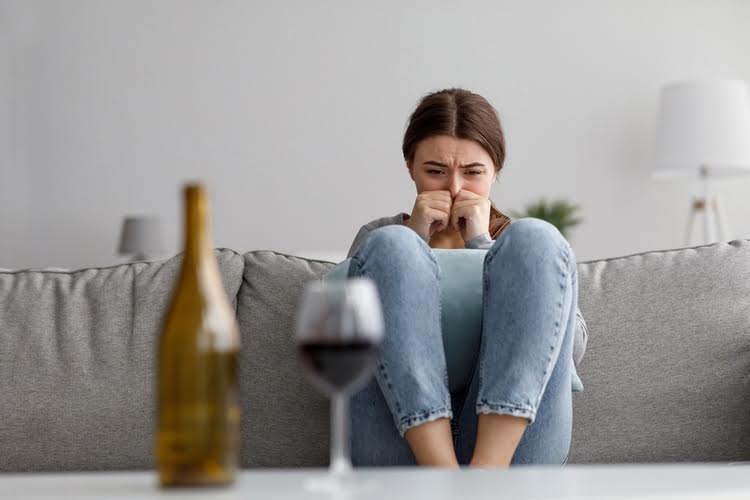But it wasn’t until the 20th century that they became the structured, supportive homes we see today. In the 1950s, groups like Alcoholics Anonymous (AA) and Narcotics Anonymous (NA) highlighted the value of group support and sober housing, leading to the growth of sober living houses across the U.S. Research shows that people who live in sober living houses are less likely to relapse than those who move straight from treatment to living on their own.
- While a sober living house doesn’t offer individual or group counseling, it offers structure and support to help you maintain your sobriety.
- Sober living homes vary depending on how they’re run and the services they provide.
- These became the first sober houses in California – some of which are still operating today.
- A sober living house can be a valuable support for people in recovery, providing stability, accountability, and a sense of community.
- Sober homes minimize these risks, allowing residents to ease into independence with structure and support.
Luxurious Transitional Living
If you have already gone through rehab, but you’re not quite ready to live independently, this type of facility may be an excellent fit for you. As a halfway house resident, you can expect to follow a number of halfway house rules — a primary one being that of sobriety. Drugs and alcohol will be strictly prohibited and random drug testing will occur in order to ensure compliance. You will need to take the necessary steps toward recovery from your previous drug or alcohol addiction(s). Participation in group therapy and/or AA meetings or NA meetings might be expected of you.
How Do Sober Living Homes Work?

Many sober living facilities provide group therapy, individual counseling, family therapy, and 12-Step programs. The specific therapies vary depending on the home’s philosophy and resources. The length of stay at a sober living facility varies depending on each person’s needs.
What It Is Like Living in a Sober House: A Complete Guide

They are designed to be a transitional space from residential treatment alcoholism treatment to mainstream society. To help ease the transition into a communal transitional living environment, Avenues NYC residents are provided with 10 hours of free integration coaching. During integration coaching sessions, new residents receive support, guidance, and helpful information to help navigate the road ahead. These integration sessions are the perfect opportunity to explore Avenues NYC’s surrounding TriBeCa neighborhood, learn to navigate New York City, and become familiar with nearby recovery and support groups.

BlueCrest Counseling Center
- Having time to become comfortable in sobriety might be the single most important part of the Oxford House success story.
- The structured nature of a sober home involves a number of rules that must be followed, including abstention from drugs and alcohol (drug tests are given), chores, a curfew, and any number of other directives.
- However, although these residences are less restrictive than inpatient facilities, they still have rules that residents must abide by.
- The Journal of Substance Abuse Treatment found that residents in sober living houses had far fewer instances of substance use compared to those without this support.
- The rules in halfway houses tend to be more rigid, often tied to legal obligations, and the population may include individuals who are on parole or mandated by the court system.
- For example, members must often pay for rent and hold a steady job or attend school.
A sober living home is a structured, substance-free residence designed to help individuals transition from addiction treatment to independent, sober living. Unlike inpatient rehab facilities, sober living houses do not provide medical treatment but instead offer an environment that encourages accountability, peer support, and personal growth. A sober living house is a place where people recovering from addiction can live together in a safe, substance-free environment. These homes offer routines, rules, and support from others on the same path, helping residents move from treatment to independent life. Unlike inpatient facilities, sober living houses don’t have strict 24/7 medical oversight, allowing residents more https://mkr.si/how-alcohol-affects-your-eyes-effects-explained/ freedom to build skills and independence while still having a supportive community around them. Most facilities have house rules and an orderly environment that promotes sobriety, responsibility and accountability.
- Payment plans, scholarships, grants and government-funded programs may be available for residents facing financial hardship.
- Sober living houses play a vital role in the recovery journey by offering a secure and empowering environment for individuals working toward sobriety.
- Residents’ insurance may, however, help cover addiction treatments – like therapy.
- Not all homes offer the same things, so finding one by word of mouth can be helpful.
- Whether you’re coming from a rehab program or just need a supportive place to stay sober, understanding what a sober living house offers can help your recovery.
- Recovery programs filled the gap by initiating abstinence and including detoxification.
More recently, a 2021 study found sober living residents to be more likely to remain in outpatient treatment programs longer than those who did not attend an SLH. Residents reported that the structure and support of an SLH provided accountability, as well as life and coping skills, all of which contributed to their success3. The goal is to transition to an independent lifestyle – free of substance abuse and addiction.
Avenues provides an unmatched experience for men seeking recovery from drugs and alcohol. Stronger Sober House is committed to providing a nurturing and supportive sober living environment for men and women in recovery. Our goal is to empower individuals as they rebuild their lives with hope and purpose.
The manager orients new residents and explains the rules and expectations. Having time to become comfortable in sobriety might be the single most important part of the Oxford House success story. Avenues NYC’s network of recovery professionals features some of the Tri-state Area’s finest health and wellness providers. Avenues NYC case managers work in tandem with these outside clinicians, keeping an open line of communication to ensure accountability, and an in-depth, collaborative recovery process. If you or a loved one is seeking a sober living house with compassionate support and structure, Elevate Recovery Homes is here to help. Transitional housing and recovery residences provide different levels of support based on individual needs.
Sober Living
Assigned house chores will have to be completed and a curfew will be imposed. A halfway house is a structured, temporary living facility for those sober house who are making their way toward a more permanent and independent living situation. The term “halfway house” sometimes refers to a place that accommodates people who have just been released from prison and are not yet able to live alone. However, more often than not, it refers to a place for ordinary individuals who are recovering from drug or alcohol addiction. It is also known as a sober living facility, sober home, or transitional home. Embarking on the journey to sobriety is a courageous and transformative decision.


Leave a Reply